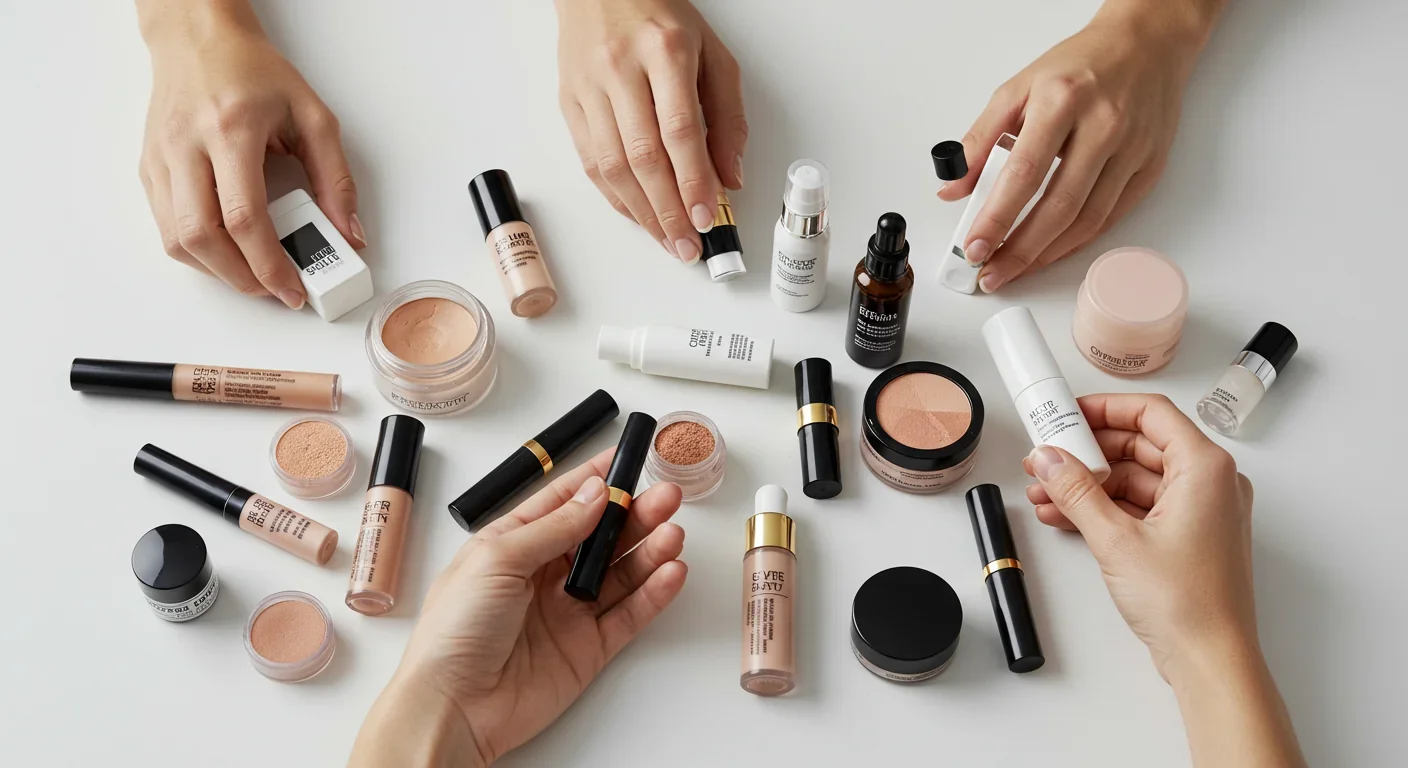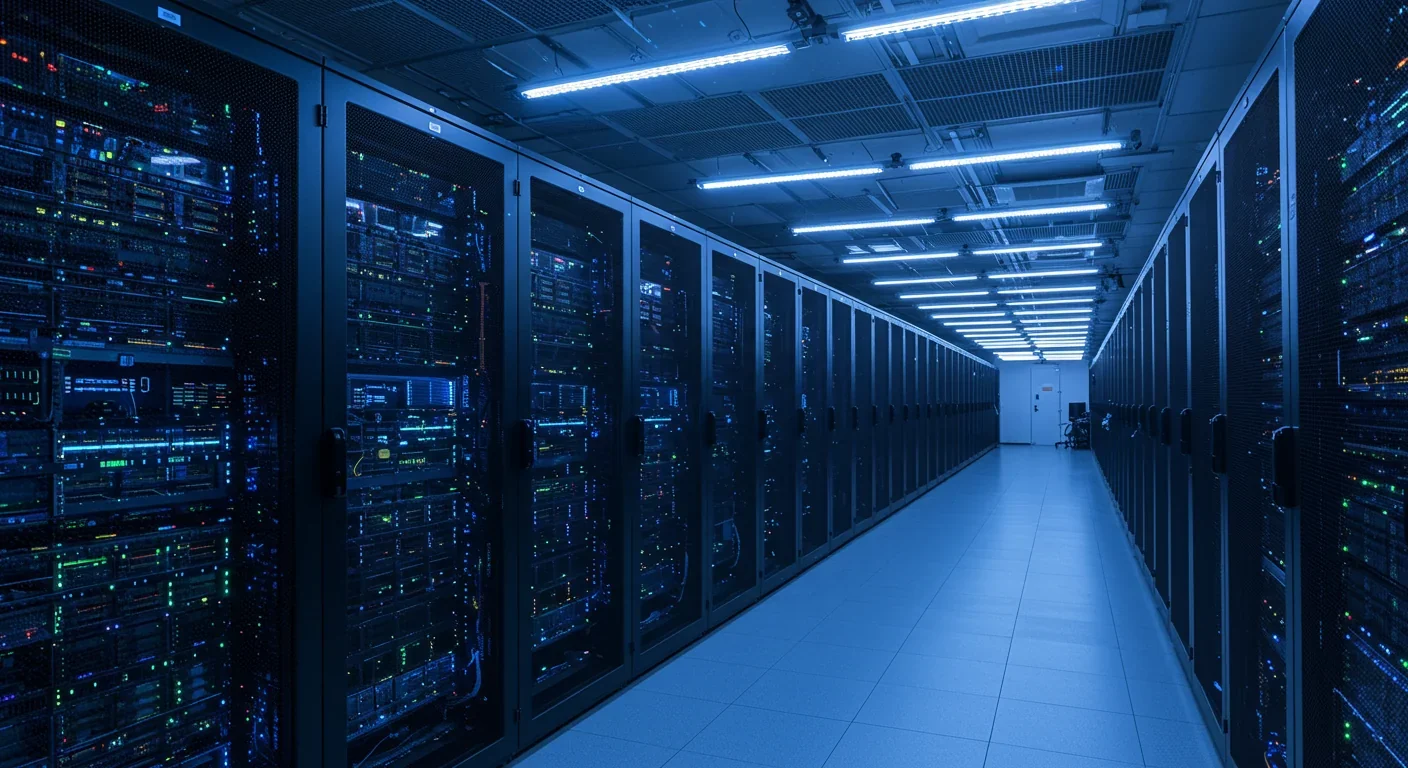When Reality Becomes Partisan: The Death of Shared Truth

TL;DR: Social media creators are embracing deinfluencing—actively discouraging purchases rather than promoting products. This counter-movement, with 1.3 billion TikTok views, is reshaping influencer marketing by prioritizing authenticity over consumption, challenging brands to adapt, and revealing that saying 'no' can build more trust than endless promotion.

Picture this: You're scrolling TikTok, expecting the usual parade of "must-have" products and affiliate links, when a creator looks into the camera and says, "Don't buy this." Not because the product is terrible, necessarily, but because you probably don't need it. That message—radical in its simplicity—has exploded into a movement that's fundamentally reshaping how social media influences what we buy. With nearly 1.3 billion views on TikTok alone, deinfluencing represents the most significant counter-trend to emerge in creator culture, and it's forcing everyone from mega-influencers to Fortune 500 brands to reconsider what influence actually means.
The deinfluencing revolution has an origin story, and like most internet phenomena, it began with backlash. In January 2023, beauty influencer Mikayla Nogueira posted a sponsored review of L'Oreal's Telescopic Lift mascara. Viewers noticed something off—her lashes looked suspiciously enhanced, possibly with false lashes she hadn't disclosed. The incident, dubbed "MascaraGate," went viral for all the wrong reasons.
What happened next surprised everyone. Instead of the scandal fading into the typical news cycle, creators across platforms began posting their own "anti-haul" videos, explicitly telling followers which products weren't worth the money. The hashtag #deinfluencing emerged, and within months, it had racked up 730 million views by July 2023.
This wasn't just creators hopping on a trend. It represented something deeper: a collective exhale after years of relentless consumption messaging. "The deinfluencing trend reflects a growing desire for authenticity online," researchers noted, as audiences increasingly questioned the endless product recommendations flooding their feeds.
Traditional influencer marketing operates on affiliate links and sponsored content, but the deinfluencing movement has flipped this model on its head—proving that telling people NOT to buy can be just as powerful as promoting products.
Traditional influencer marketing operates on a straightforward premise: creators recommend products, audiences buy them, everyone profits. It's an industry worth billions, with more than 80% of U.S. companies using influencers for marketing purposes. But that model depends on maintaining audience trust, and cracks had been forming for years.
Creators who've embraced deinfluencing cite several motivations. First, there's genuine audience fatigue with ads and hype. Survey data reveals that only 12% of consumers actually buy an endorsed product, and 42% later regret the purchase. Those are dismal numbers if you're trying to build a long-term relationship with your followers.
Then there's the sustainability angle. As awareness of overconsumption's environmental toll grows, many creators—particularly those with younger audiences—feel ethically uncomfortable promoting constant purchasing. Growing skepticism toward materialism and increased consciousness around consumption patterns have made "buy more stuff" messaging feel increasingly out of step with cultural values.

Financial responsibility plays a role too. With economic uncertainty affecting many viewers, creators recognized that telling followers to spend money on unnecessary products felt tone-deaf. Some deinfluencers position themselves as financial educators, helping audiences distinguish genuine needs from manufactured wants.
But here's the twist: many deinfluencers haven't abandoned monetization. They've just gotten strategic about it.
This is where deinfluencing gets fascinating. You'd think telling people not to buy things would torpedo a creator's influence and income. The opposite has happened.
Micro-influencers who incorporate critical reviews command approximately 60% higher trust levels and a 20% higher conversion rate compared to their macro-influencer counterparts. That trust translates to actual economic power. When these creators do recommend something, their audiences listen—and buy—because they've established credibility through selective skepticism.
"Deinfluencing creates a virtuous trust loop where negative reviews increase audience trust, which paradoxically boosts the creator's influence for future recommendations."
— Industry analysis of creator authenticity metrics
Take Dara Levitan, a micro-influencer who began adding disclaimers in her makeup reviews warning viewers against overspending. Rather than losing brand partnerships, she found companies more eager to work with her because audiences trusted her opinions. It created what one analyst called a "virtuous trust loop"—negative reviews increase credibility, which boosts influence for future recommendations.
The data backs this up. Studies show that 77% of brands now prefer working with micro-influencers over larger names, and 83% say that collaborating with influencers who prioritize credibility results in more loyal customers. Brands are realizing that quality matters more than quantity.
This dynamic reveals something profound about influence itself: authority comes not from always saying yes, but from demonstrating the judgment to say no. In an attention economy drowning in recommendations, selectivity becomes the ultimate luxury.
The deinfluencing movement has forced brands into uncomfortable territory. For years, the playbook involved securing influencer partnerships, generating buzz, and watching sales climb. Now they're discovering that audience trust has eroded to the point where traditional tactics backfire.

Some brands have responded defensively, pulling back from influencer marketing entirely or restricting partnerships to tightly controlled campaigns. But the savvier ones recognize an opportunity. Honest feedback from deinfluencers can serve as free product development research, highlighting genuine weaknesses before full-scale launches.
Certain companies have even leaned into the trend. Rather than fighting the deinfluencing wave, they've partnered with critical creators to demonstrate confidence in their products. The message: "We're so sure our product stands up to scrutiny that we'll pay someone known for skepticism to review it." When executed authentically, this approach can generate significant goodwill.
The key word there is "authenticity." Brands attempting to co-opt deinfluencing as just another marketing tactic face swift backlash. Audiences have finely tuned radar for what researchers call "pseudo-authenticity"—the appearance of honesty wrapped around commercial intent.
This creates a new challenge for marketers: how do you work with creators who've built their brand on anti-consumption without undermining the very authenticity that made them valuable?
Brands must ensure their collaborations genuinely reflect their values to avoid the trap of pseudo-authenticity. The era of transactional influencer partnerships is giving way to long-term relationships built on shared principles.
Social media platforms face their own deinfluencing dilemma. Their business models depend on engagement, and historically, aspirational content—the kind that makes you want to buy things—drives high engagement. So how do platforms respond when anti-consumption content starts generating massive view counts?
The answer: cautiously but pragmatically. Deinfluencing content that emphasizes authenticity, sustainability, and addressing social media burnout tends to generate strong engagement metrics—likes, comments, shares. From an algorithmic perspective, engagement is engagement, regardless of whether it promotes or discourages purchasing.
TikTok, where the trend first exploded, hasn't suppressed deinfluencing content. If anything, the platform's algorithm rewards it because viewers engage more deeply with content that feels genuine compared to obvious advertisements. The platform has even adjusted its creator fund policies to better support educational and commentary content rather than exclusively rewarding promotional posts.
Instagram and YouTube have followed similar patterns. YouTube's algorithm particularly favors longer, in-depth content, which gives deinfluencers room to provide detailed product analyses and alternatives. Instagram Reels has seen a surge in deinfluencing content that performs well because it taps into existing audience frustration with sponsored posts.

But there's tension here. Platforms still generate significant revenue from advertising and shopping integrations. Long-term, if deinfluencing significantly reduces consumer spending through social media, platforms may need to reconsider their business models—or find ways to monetize authenticity itself.
Deinfluencing doesn't exist in a vacuum. It's part of a larger cultural reckoning with consumption, environmental impact, and what constitutes a meaningful life. The movement connects to several established trends that have been quietly building for years.
Minimalism, once a niche lifestyle choice, has entered mainstream consciousness. Marie Kondo's "does it spark joy?" philosophy resonated precisely because it gave people permission to stop accumulating. Deinfluencing provides similar permission, now delivered through the most influential medium for younger generations: short-form video.
The conscious consumption movement has also gained momentum, particularly among Gen Z consumers who increasingly prioritize sustainability and ethical considerations in purchasing decisions. Research shows that younger consumers are willing to pay more for sustainable products and actively seek out brands that align with their values.
Financial independence communities, particularly the FIRE (Financial Independence, Retire Early) movement, have long advocated for reducing unnecessary spending. Deinfluencing translates those principles into digestible social media content, making frugality and financial literacy more accessible to audiences who might never read a personal finance blog.
There's also a mental health component. Constant exposure to curated lifestyles and product recommendations contributes to anxiety, inadequacy, and comparison culture. Addressing social media burnout has become a priority for both platforms and users. Deinfluencing offers a counternarrative: maybe what you already have is enough.
"The deinfluencing trend is shaking up the traditional influencer model built on affiliate links and sponsored content, challenging fundamental assumptions about growth-driven capitalism."
— Research on digital culture and consumer behavior
Economist perspectives on deinfluencing highlight how it challenges fundamental assumptions about growth-driven capitalism. If influence increasingly means encouraging restraint rather than consumption, what does that mean for economic models built on perpetual expansion?
Here's the uncomfortable question that haunts the deinfluencing movement: can you make money by telling people not to spend money? More pointedly, can you maintain authenticity while monetizing anti-consumption content?
Some creators have navigated this paradox skillfully. They've diversified income streams beyond brand deals—through Patreon subscriptions, digital products, educational courses, or affiliate links for genuinely useful alternatives. The revenue model shifts from transactional (buy this specific product) to relational (support me for ongoing honest content).

Others have discovered that brands will pay for critical reviews if they genuinely want feedback or if their products can withstand scrutiny. This arrangement works when both parties are transparent about the relationship and the creator maintains editorial independence.
But there's a slippery slope. As deinfluencing becomes more popular, some creators have begun treating it as just another content format to exploit. They post anti-hauls for engagement, then promote products in the next video. Audiences notice this inconsistency, and trust evaporates quickly.
The "authenticity paradox" describes this tension: the act of performing authenticity for an audience inherently undermines it. When deinfluencing becomes a calculated strategy for building influence, does it still count as authentic?
Researchers studying digital culture suggest the answer lies in consistency and transparency. Creators who clearly communicate their values, revenue sources, and decision-making process maintain credibility even while earning income. Those who treat deinfluencing as performance without substance eventually face backlash.
The movement's long-term viability likely depends on constructive collaboration between creators and brands, where both parties prioritize long-term trust over short-term profits. That requires a significant shift from current influencer marketing norms.
So where does deinfluencing go from here? Several scenarios seem plausible, and they're not mutually exclusive.
First, deinfluencing could become standard practice for credible creators. Rather than a counterculture movement, it might evolve into an expected part of influencer content—a mix of endorsements, critical reviews, and educational material. This would fundamentally transform influencer marketing from promotional to advisory.
Second, brands might shift budgets toward creators with proven authenticity metrics rather than raw reach. We're already seeing this with the preference for micro-influencers. This could redistribute wealth in the creator economy, rewarding substance over scale.
Third, platforms could develop new features that validate creator authenticity, perhaps through transparency tools that disclose partnerships, compensation, and review methodologies. Some have suggested verification systems specifically for creators who maintain editorial independence.
There's also the possibility that deinfluencing represents a temporary correction rather than permanent shift. Economic pressures on creators are real, and if deinfluencing proves financially unsustainable, many may return to traditional promotional content. The movement's durability depends partly on whether audiences continue to value and reward authentic content through direct support mechanisms.
The deinfluencing movement isn't just about saying no to products—it's questioning whether social media can exist without perpetuating overconsumption, and reimagining what influence means in a digital age.
Some analysts predict deinfluencing will spread beyond B2C into B2B markets. Currently, B2B influencer marketing lags behind in adopting these trends, but business audiences are equally capable of skepticism about overhyped solutions. Professional spaces might see their own version of this movement.
The broader economic implications are significant. If deinfluencing substantially reduces consumption, particularly of discretionary goods, it could impact retail, manufacturing, and advertising sectors. On the other hand, it might redirect spending toward higher-quality products with longer lifespans, benefiting different segments of the economy while supporting sustainability goals.
Deinfluencing has revealed something crucial about our relationship with social media, consumption, and influence itself. For years, platforms conditioned us to equate influence with promotion, success with accumulation, and authenticity with carefully curated performance. The deinfluencing movement challenges all three equations.
Whether you're a casual social media user, a creator, or a marketing professional, this shift matters. It's changing what content gets rewarded, which creators build lasting careers, and how brands need to approach digital marketing. More fundamentally, it's questioning whether social media can exist without perpetuating overconsumption.
The answer probably isn't that we'll stop buying things because TikTokers tell us not to. Consumer culture has survived plenty of counter-movements before. But deinfluencing represents something potentially more enduring: a generation of digital natives learning to distinguish between genuine recommendations and manufactured desire, between influence and manipulation.
That discernment, once learned, doesn't disappear easily. And that might be the most revolutionary thing about this trend—not that it stops consumption entirely, but that it introduces friction, consideration, and choice into a system designed to eliminate all three.
The next time someone in your feed says "don't buy this," pay attention. They're not just reviewing a product. They're participating in a larger conversation about what we value, what we need, and who we trust to tell us the difference. That conversation is still unfolding, and where it leads will shape not just social media, but the relationship between technology, commerce, and culture for years to come.
In a world optimized for "buy now," maybe the most radical act is simply saying, "not today."

Curiosity rover detects mysterious methane spikes on Mars that vanish within hours, defying atmospheric models. Scientists debate whether the source is hidden microbial life or geological processes, while new research reveals UV-activated dust rapidly destroys the gas.

CMA is a selective cellular cleanup system that targets damaged proteins for degradation. As we age, CMA declines—leading to toxic protein accumulation and neurodegeneration. Scientists are developing therapies to restore CMA function and potentially prevent brain diseases.

Intercropping boosts farm yields by 20-50% by growing multiple crops together, using complementary resource use, nitrogen fixation, and pest suppression to build resilience against climate shocks while reducing costs.

Cryptomnesia—unconsciously reproducing ideas you've encountered before while believing them to be original—affects everyone from songwriters to academics. This article explores the neuroscience behind why our brains fail to flag recycled ideas and provides evidence-based strategies to protect your creative integrity.

Cuttlefish pass the marshmallow test by waiting up to 130 seconds for preferred food, demonstrating time perception and self-control with a radically different brain structure. This challenges assumptions about intelligence requiring vertebrate-type brains and suggests consciousness may be more widespread than previously thought.

Epistemic closure has fractured shared reality: algorithmic echo chambers and motivated reasoning trap us in separate information ecosystems where we can't agree on basic facts. This threatens democracy, public health coordination, and collective action on civilizational challenges. Solutions require platform accountability, media literacy, identity-bridging interventions, and cultural commitment to truth over tribalism.

Transformer architectures with self-attention mechanisms have completely replaced static word vectors like Word2Vec in NLP by generating contextual embeddings that adapt to word meaning based on surrounding context, enabling dramatic performance improvements across all language understanding tasks.